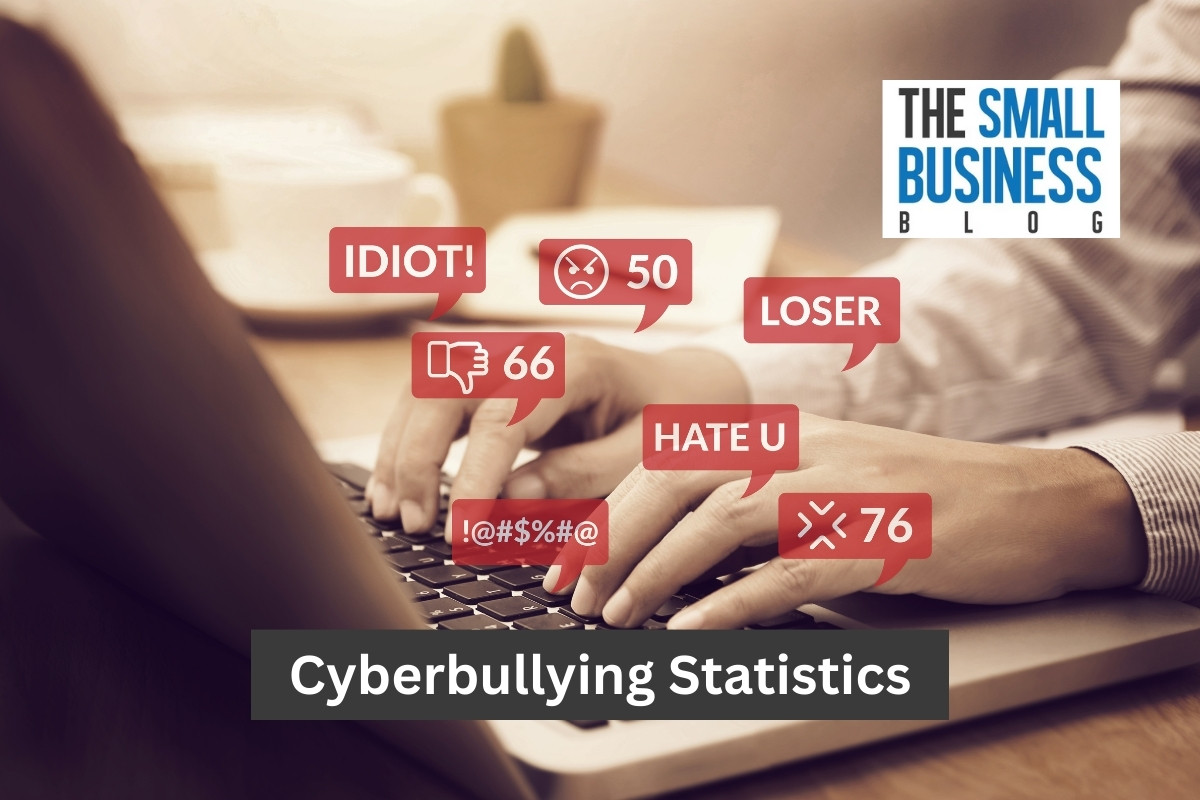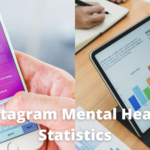Bullying has been a problem all over the world for centuries, but since the digital age began, cyberbullying has significantly increased.
It’s an issue prevalent among teenagers, but anyone younger or older can experience cyberbullying.
Recent data revealed that almost 50% of all teenagers in the United States alone have experienced some form of cyberbullying at some point in their lifetimes.
We have gathered more cyberbullying statistics and data to show how it impacts the world’s youth and what we can all do about it.
Cyberbullying isn’t just fun and games as some may view it.
This type of bullying can have a devastating impact on its victims both physically and emotionally.
It has been known to result in victims experiencing depression, anxiety, and some have even taken their lives.
Some admit that they have considered or have attempted suicide.
In this article, we will address cyberbullying and provide the data and statistics related to it.
You will also find ways to prevent cyberbullying and how to do your part to do so.
Let’s investigate the status of cyberbullying as of 2024.
Post Contents
- 1 Key Statistics
- 2 Top Cyberbullying Statistics in 2024
- 2.1 1. 46% of teenagers aged 13 to 17 report they have been cyberbullied.
- 2.2 2. 32% of teenagers experienced offensive name calling cyberbullying.
- 2.3 3. Over 6,000 10-to-18-year-olds were cyberbullied in 2022.
- 2.4 4. Data from 2019 revealed that around half of LGBTQ+ students experienced online harassment cyberbullying.
- 2.5 5. During the global pandemic kids spent 20% more time online.
- 2.6 6. Cyberbullying occurs more than offline bullying in U.S. public schools.
- 2.7 7. Cyberbullied preteens and teens are over 4 times as likely to have suicidal thoughts.
- 2.8 8. 73% of students feel they’ve been bullied in their lifetime.
- 2.9 9. 29% of 6th grade students reported some form of bullying in 2019.
- 2.10 10. 26.3% of survey participants said that cyberbullying impacted academic performance.
- 2.11 11. 21.1% of preteens/teens surveyed said they considered self-harm due to cyberbullying.
- 2.12 12. 10% of cyberbullied teens have experienced physical threats.
- 2.13 13. A 70% increase in hate speech and cyberbullying was reported at the beginning of the lockdowns.
- 2.14 14. One in three young individuals across 30 countries reported cyberbullying in 2019.
- 2.15 15. Preteen/teenage girls are more likely to be cyberbullied than boys.
- 2.16 16. 42% of young Instagram users reported cyberbullying.
- 2.17 17. 79% of cyberbullying occurs among children on YouTube.
- 2.18 18. 81% of children believe it’s easier to get away with cyberbullying than traditional bullying.
- 2.19 19. Almost 24% of teenagers have been asked to send sexually explicit pictures.
- 2.20 20. A strong correlation between bullying/cyberbullying behaviors and violent crimes has been reported.
- 3 FAQs
- 4 Cyberbullying Help Resources:
- 5 Conclusion
Key Statistics
- 46% of teenagers aged 13 to 17 report they have been cyberbullied.
- 32% of teenagers experienced offensive name calling cyberbullying.
- Over 6,000 10-to-18-year-olds were cyberbullied in 2022.
- Around half of LGBTQ+ students experienced online harassment.
- During the global pandemic kids spent 20% more time online.
- Cyberbullying occurs more than offline bullying in U.S. public schools.
- Cyberbullied preteens/teens are over 4 times as likely to experience suicidal thoughts/attempts.
- 73% of students feel they’ve been bullied in their lifetime.
- 29% of 6th grade students reported some form of bullying in 2019.
- 26.3% of survey participants said that cyberbullying impacted academic performance.
Top Cyberbullying Statistics in 2024

1. 46% of teenagers aged 13 to 17 report they have been cyberbullied.
According to Pew Research, 46% (almost half) of all teens aged 13 to 17 have experienced cyberbullying as of 2022.
This research survey was conducted between April 14, 2022, to May 4, 2022.
This data revealed that teens within this age demographic experienced one form of cyberbullying or another.
(Pew Research Center)
2. 32% of teenagers experienced offensive name calling cyberbullying.
The largest percentage of teens aged 13 to 17 reported that they experienced offensive name calling, which is one form of cyberbullying.
Moreover, 22% said they had lies and false rumors spread about them.
While only 7% had explicit images shared of them without their consent, that’s still too many.
(Pew Research Center)
3. Over 6,000 10-to-18-year-olds were cyberbullied in 2022.
Cyberbullying isn’t exclusive to the United States.
In a cyberbullying survey conducted by the European Commission’s Joint Research Centre (JRC), over 6,000 preteens and teens between 10 and 18 were cyberbullied from June to August in 2022.
Furthermore, 44% of those who had experienced cyberbullying before the lockdowns said it increased during the lockdowns according to data from the 11 European countries surveyed.
(Enough is Enough)
4. Data from 2019 revealed that around half of LGBTQ+ students experienced online harassment cyberbullying.
Cyberbullying happens to preteens, teenagers, young adults, and adults all over the globe.
However, about 50% of LGBTQ+ students said they experience online harassment.
In fact, 27 empirical studies have shown that cyberbullying among LGBTQ+ youth is between 10.5% and 71.3%, which is higher than of heterosexual youth.
(Do Something, NIH 2)
5. During the global pandemic kids spent 20% more time online.
The fact that children and teenagers were spending 20% more time online during the pandemic lockdowns contributed to the increase in cyberbullying.
In fact, 56% of reports performed during the first two quarters of 2020 showed a correlation between the increase time spend online and cyberbullying.
(Security.org)
6. Cyberbullying occurs more than offline bullying in U.S. public schools.
The NCES revealed that cyberbullying in the United States, happens more often than traditional offline bullying in U.S. public schools.
This annual report came from the National Center for Education Statistics (NCEs) in 2019.
The data is taken from sources like student, teacher, principal, and other education sources surveys.
It addressed bullying/cyberbullying across all forms.
(ERIC, NIH²)
7. Cyberbullied preteens and teens are over 4 times as likely to have suicidal thoughts.

Among survey participants with an average age of 12 it was found that those who experienced cyberbullying were over 4 times as apt to report suicidal thoughts or attempts than among those who weren’t cyberbullied.
This data was also measured against family conflict, parental monitoring, racial discrimination, and school support resources.
(NIH)
8. 73% of students feel they’ve been bullied in their lifetime.
According to 2023 statistics, bullying is still an issue for most students.
Overall, among in-person bullying and cyberbullying, 73% of students said they felt they were bullied.
Another 44% claimed it happened over the course of the last 30 days in one survey.
It’s believed that cyberbullying inflicts more damage than in-person bullying due to how the digital space works and how it can happen anytime and anywhere.
(Broadband Search)
9. 29% of 6th grade students reported some form of bullying in 2019.
Statistics have revealed that nearly all types of bullying peak in the middle school years.
In fact, 29% of 6th graders have reported bullying incidents, which is the highest figure reported among middle school students.
This data comes from the NCES in a 2019 study of bullying and cyberbullying.
(Megan Meier Foundation)
10. 26.3% of survey participants said that cyberbullying impacted academic performance.

Research has shown that victims of cyberbullying are more apt to experience poor academic performance.
Also, they tend to miss more school days, which contributes to their poor academic performance.
Moreover, 20% of cyberbullied teens/preteens considered leaving their schools and 19.7% thought about not going online anymore.
(BMC Psychiatry)
11. 21.1% of preteens/teens surveyed said they considered self-harm due to cyberbullying.
Not only does cyberbullying impact academic performance, it also affects the emotional well-being of the person.
In one study, 21.1% of survey respondents of those who have been cyberbullied said they considered harming themselves because of the consequences related to cyberbullying.
(BMC Psychiatry)
12. 10% of cyberbullied teens have experienced physical threats.
Reports show that 10% of teenagers aged 13 to 17 have experienced physical threats from cyberbullying.
There are several forms of bullying and cyberbullying that are reported and studied.
Physical threats fall under one form of cyberbullying that impacts teenagers in 2023.
(Pew Research Center)
13. A 70% increase in hate speech and cyberbullying was reported at the beginning of the lockdowns.
During the initial COVID-19 lockdowns a 70% increase in hate speech and cyberbullying was reported among preteens and teens.
This growth was calculated against the months before the lockdowns.
(Enough is Enough)
14. One in three young individuals across 30 countries reported cyberbullying in 2019.
Cyberbullying isn’t localized in any one region or country.
In fact, across 30 countries worldwide, one in three young people said they fell victim to some form of cyberbullying.
Another one in five said they skipped school because of cyberbullying and violence. This comes from a UNICEF poll from 2019.
(Enough is Enough)
15. Preteen/teenage girls are more likely to be cyberbullied than boys.

Cyberbullies often target a specific demographic group.
We already learned that kids from the LBGTQ+ community are targeted more often than the heterosexual demographic.
Likewise, preteen and teenage girls are more apt to be targeted than boys.
In fact, 15% of teenage girls have been targeted among at least four types of online abusive behaviors compared to 6% of the male demographic.
(Do Something)
16. 42% of young Instagram users reported cyberbullying.
Instagram tends to be a targeted social media platform where most youngsters report cyberbullying.
Furthermore, 83% of young people using social media across platforms think that these platforms should do more to combat cyberbullying on individual platforms.
Keep in mind that 95% of teenagers in the United States are using the internet across multiple devices.
(Do Something)
17. 79% of cyberbullying occurs among children on YouTube.
Young people are being targeted across social apps/platforms.
While Instagram has a significant percentage cyberbullying among young people, YouTube accounts for 79% of cyberbullying among children.
Furthermore, Snapchat cyberbullying accounts for 69%, TikTok 64%, and Facebook 49%.
Cyberbullying increases as children age as research shows that between those aged 10 to 18, an 2% increase is found.
(Security.org)
18. 81% of children believe it’s easier to get away with cyberbullying than traditional bullying.
Nearly 81% of children from one survey said they believe that cyberbullying is easier to get away with than in-person bullying as of 2023.
Something that may contribute to this figure is that 90% of those who see cyberbullying ignore it.
That said, there are also statistics that show 84% of young students claim to have seen someone stand up to a cyberbully to tell them to quit doing it.
(Broadband Search)
19. Almost 24% of teenagers have been asked to send sexually explicit pictures.
Sadly, sexual cyberbullying is one form that we haven’t yet addressed, but it happens more often than we want to imagine.
It’s reported that almost one-quarter, 24% of teens have had requests to send sexually explicit images to a cyberbully.
These cyberbullies sometimes use blackmail or other forms of coercion to get those images.
Teenagers are also less likely to tell their parents about this kind of request.
(Megan Meier Foundation)
20. A strong correlation between bullying/cyberbullying behaviors and violent crimes has been reported.

Data from the Journal of Adolescent Health published in Science Direct revealed some startling statistics on the correlation between bullying behaviors and violence.
It was found that 17% of 5th grade students experienced a violent injury after bullying.
The research also found that there is a substantial “linear dose-response relationship between the duration of bullying penetration and violent injury.”
(Megan Meier Foundation, Science Direct)
FAQs
What is Cyberbullying?
Cyberbullying is bullying that takes place via digital devices such as computers, tablets, or cell phones.
This type of bullying occurs via messaging apps, social media, online forums, gaming venues, or through SMS texting.
Cyberbullying can include posting, sharing, or sending negative, embarrassing, false, harmful, or mean content about another person.
I can also include the impersonation of someone else or by excluding someone from an online group.
What are the Signs of Cyberbullying?
Some signs that you or another person may be cyberbullied include:
1. Getting threatening, embarrassing, or mean messages via SMS, messaging, or social media or forum postings.
2. Rumors or lies about you are being spread online.
3. Being excluded from online activities or groups.
4. Having your videos or photos shared without your permission
5. Feeling uncomfortable or unsafe online.
What Should You Do if You’re Being Cyberbullied?
If you’re experiencing cyberbullying, it’s vital that you tell someone you trust about it.
You can talk to a parent, counselor, teacher, or other trusted adult. They can help you figure out your next steps.
Here are some of the things you can do:
1. Never respond or engage with a cyberbully. You will only be encouraging more bullying.
2. Block the cyberbully so they can’t contact you.
3. Save any communications from the cyberbully like text messages or screenshots. This is helpful when you go to report it to the website administrator or your school.
What are Some Things Parents Can Do to Help Prevent Cyberbullying?
Parents can play a significant role in the prevention of cyberbullying.
Here are some things parents can do to eliminate or mitigate cyberbullying:
1. Talk to your kids about cyberbullying and how to recognize it.
2. Set and enforce rules regarding internet usage.
3. Monitor the online activities of your children without being intrusive.
4. Teach your children how to be respectful to others online.
4. Encourage your children to talk to you if they are being cyberbullied.
If everyone does their part to mitigate cyberbullying, it could be virtually eliminated in a few years.
Cyberbullying Help Resources:
- Childline in the UK 0800 1111
- NSPCC Helpline UK 0808 800 5000
- Young Minds UK 0808 802 5544
- Stop Bullying Now Hotline in the USA 1-800-273-8255
- Kids Help Phone Canada 800-668-6868
- Kids Helpline Australia 1-800 55 1800
Conclusion
Now we all know better how cyberbullying impacts our kids, teens, and others in the world.
We also have resources to help mitigate the problems and the consequences of such among its victims.
Our hope is that we have brought higher awareness of the prevalence of cyberbullying and the impact that it has on those who experience it.
It’s mostly occurring among teens and young people but cyberbullying also has its problems among older demographics.
We focused mostly on the largest demographics of this global issue.
We hope you feel more informed about cyberbullying after reading these cyberbullying statistics.
We all need to do our part to prevent and protect against bullying and cyberbullying.






























